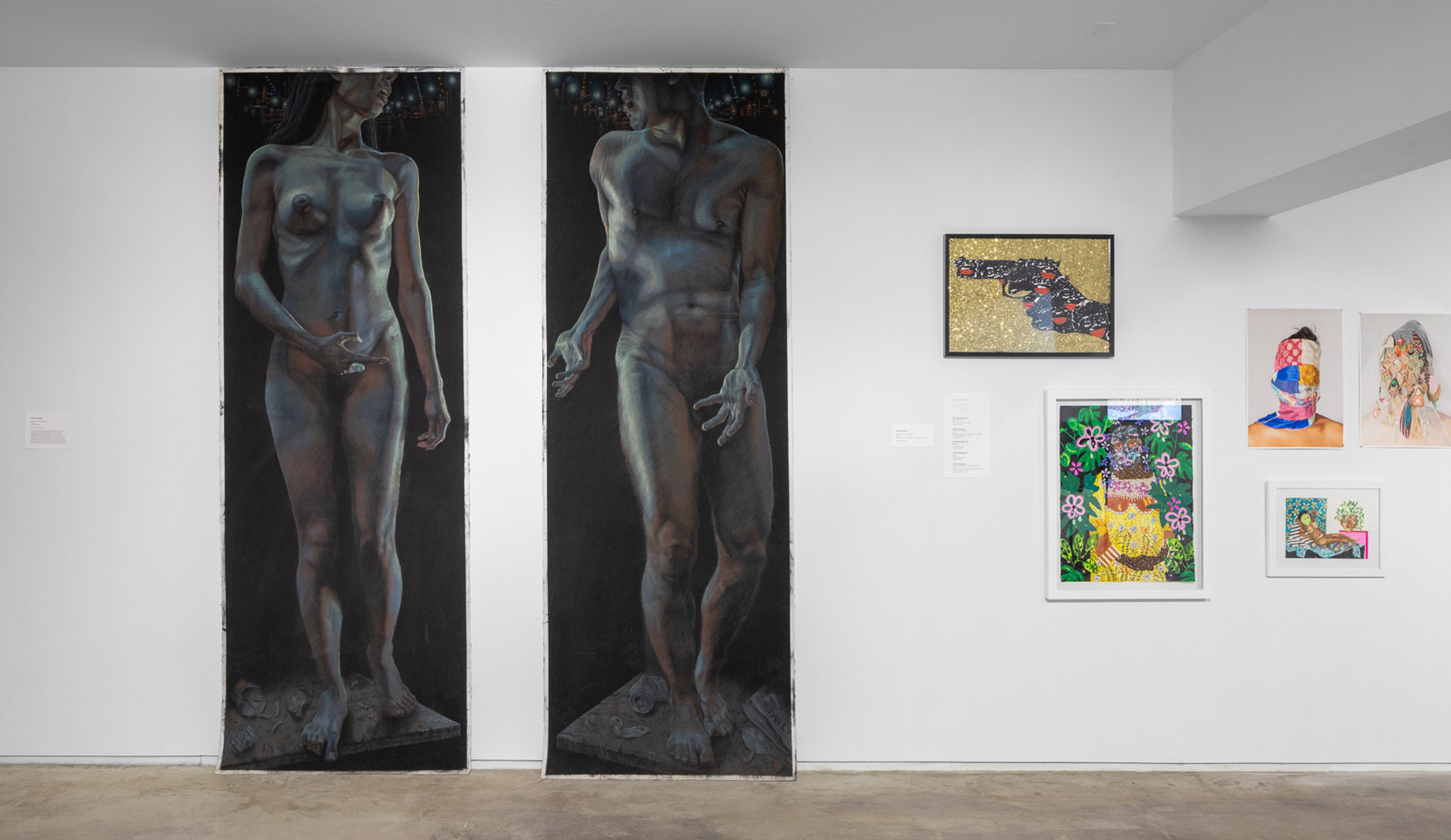As a society, and especially as Houstonians, we have experienced a collective trauma in the form of a pandemic – not to mention winter storm Uri, Hurricane Harvey and social unrest related to race and justice issues. We long for the interaction with others that we so often take for granted, and yet we need to fear our fellow beings as potential carriers of a life-threatening disease.
Can creating art be a cathartic and healing activity in the wake of such social upheaval? The University of Houston Blaffer Art Museum explores this very question through a localized lens. Houston may have well been what artist Vincent Valdez was picturing for the backdrop of his 2003 biblical allegory, Expulsion from The Great City. Adam and Eve were thrown out of Edenic Paradise at the beginning of civilization according to the Christian Bible, but today’s couple is depicted as being expunged from a contemporary city, cigarette butts and crushed cans littered around their feet.
With hands strategically placed over their nude forms, these larger-than-life sized pastel drawn figures by Valdez were just one of the pieces presented in the 2021 exhibition Carriers: The Body as a Site of Danger and Desire – researched and co-curated by Steven Matijcio, Jane Dale Owen Director and Chief Curator of the Blaffer Art Museum and Cynthia Woods Mitchell Associate Curator, Tyler Blackwell.
Chosen by Glasstire as the Number 1 pick for their weekly Top Five exhibitions in Texas, Carriers showcased 15 Houston-area artists. “Several artists forge new storylines or elucidate forgotten histories in Houston in the process, illuminating the tangled socio-political circumstances that affect how we move through the world,” read the Blaffer Art Museum website.
Another of the selected pieces was by Filipino Houston-based artist Matt Manalo, who drew upon a friend’s poem to create: “I Forget Forgetting My Skin Is A Ruin.” By writing this provocative phrase upon a cobbled tapestry of depleted rice sacks, painted black and held together with tape, Manalo offered a pointed, yet enigmatic statement on the traumas of invasion, colonization and exploitation that are absorbed and carried by the human body.
Instead of reflecting upon the pandemic with a collection of work reiterating the loneliness of isolation or the despair of illness, the Blaffer Museum curators chose instead to find and display work by local artists that dealt with the body as a cathartic vessel. Acknowledged was the need and longing for human interaction even as the pandemic showed the danger of such a desire. Some of the work in the show was even produced pre-coronavirus, but in the context of the pandemic, took on important new meaning.
Matijcio elaborates, “In times when trauma, reckoning and affliction seemed like a daily experience, art has the capacity to inspire essential moments of reflection.” He continues, “this exhibition forged a space to take stock of what we are collectively feeling, acknowledge the injuries – physical and psychological – and also to celebrate the ineffable beauty of being human, and how we need to remember that resilience.”
Image: Vincent Valdez, Expulsion From the Great City
